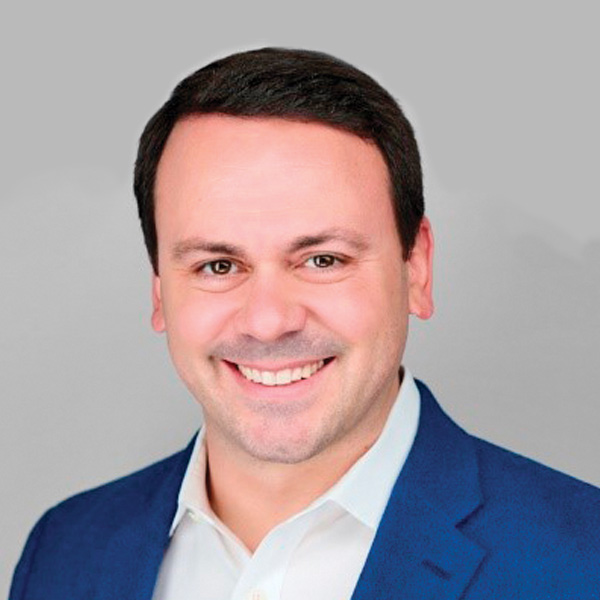If there’s been a silver lining to the slowdown in the mortgage industry, it’s been the extra time afforded originators to review their current borrower retention rates. Retaining current clients to build your business is somewhere between five to 25 times less expensive, according to HubSpot, than acquiring new clients.
If some of your former clients are now approaching retirement or already in it, they could use your assistance again. That oft-quoted retirement statistic of 10,000 people turning 65 every day is now up to 11,200 a day, according to AARP.
This tsunami of seniors and potential clients, however, is hardly monolithic. For those well prepared for retirement, they may be looking forward to a life filled with more travel, volunteering and grandkids. For those less prepared for retirement, they may be wondering how they are going to get by on less income. Indeed, 23% of American adults don’t have retirement savings outside of Social Security.
The truth is: whatever retirement looks like to your older clients — however they define it — it still needs to be funded. By providing your past clients with more financial options for their retirement, you can help improve their retirement years and your retention numbers.
“By providing your past older clients with more financial options for their retirement, you can help improve their retirement years and your retention numbers.”
How large is your opportunity to build more business in 2024? The average borrower retention rate in the mortgage industry is an abysmal 20% or one in five, according to Black Knight, one of the lowest rates of any major industry in the United States. If 80% of your former clients aren’t walking through your door, where are they heading?
Current needs
Your past clients already know you, and you know them — no introduction required. At the same time, to do business with them again, you may have to introduce new products and services relevant to their current needs and circumstances. One potentially useful product your older clients may not be familiar with is a reverse mortgage, which, if insured by the Federal Housing Administration, is called a home equity conversion mortgage (HECM).
The attraction of a reverse mortgage is its simplicity. Typically, credit score and income requirements are more flexible than they are for home equity loans. To qualify, borrowers must be 62 or older. Borrowers must also have a significant amount of home equity. For many house-rich borrowers, this equity threshold may be an easy reach. As of the third quarter of 2023, senior home equity topped a staggering $13 trillion.
Rather, the greater challenge for many brokers may simply be overcoming common public misperceptions about the product — mistruths such as homeowners must own their home free and clear to apply or they can’t sell a reverse-mortgaged home without lender approval. Reverse mortgages are not a government benefit, but since 1961, they have helped thousands of older Americans stay in their homes and improve their cash flow.
Unlike a traditional mortgage that requires monthly payments of principal and interest until the loan is repaid, borrowers don’t have to repay their HECM until they sell or permanently leave their home, pass away or fail to comply with the terms of the loan, which include maintaining the property and keeping up their property taxes and homeowners’ insurance.
Borrower’s choice
Borrowers can put their equity to work in multiple ways. Popular uses for reverse mortgages include home improvements, paying off higher-interest debt, covering healthcare costs, funding gifts to heirs, taking a bucket-list vacation or even buying another home. It’s the borrower’s choice.
Borrowers can also choose from several payout options, ranging from a lump-sum payment to monthly payments to a line of credit. They can also combine payout options. It’s important to emphasize to your clients that reverse mortgages accrue interest just like any other kind of mortgage, but that interest and the balance they borrow against doesn’t come due until a repayment trigger occurs.
When that time comes, homeowners or their heirs can sell the home, after which they retain all remaining equity. Equally, they can choose to purchase the home at 95% of its current appraised value. Regardless, neither homeowners nor the heirs are responsible for ever paying the deficit should the reverse mortgage loan balance exceed the home’s appraised value.
“For some clients, the prospect of tapping home equity with a reverse mortgage to create greater cash flow while remaining in their home may seem ‘too good to be true.’”
For some clients, the prospect of tapping home equity with a reverse mortgage to create greater cash flow while remaining in their home may seem “too good to be true.” As a result, reverse mortgage eligibility also requires that potential borrowers complete a U.S. Department of Housing and Urban Development-approved counseling session to ensure they fully understand their financial commitments and obligations under the loan. The counseling session also discusses alternative home equity solutions for retirement, such as selling the home or securing a traditional home equity loan or line of credit. For all your current, retirement-age clients, you can earn more of their business by simply providing them with a greater range of financial options. Can reverse mortgages be one of them? That’s the question you need to ask them. Their response may present you with a golden opportunity.
Author
-

Christopher Moschner is chief marketing officer at AAG, a division of Finance of America Companies. Moschner joined AAG last year and has spent his 19-year career delivering winning marketing strategies. By leveraging his technical background, he has focused on simplifying complex product concepts to better demonstrate customer value and drive sales growth. He previously worked for insurance and annuity companies Protective Life and Brighthouse Financial. Before that, Moschner worked as a brand manager for Procter & Gamble. Reach Moschner at (866) 948-0003.





